The plum tree, which bore so well this summer, was seriously overgrown. Some branches, under their load of plums, had snapped. Others had simply drooped so low they weren’t going to recover. One branch was so low Tom had trouble mowing on that side of the tree. In addition, it was growing into the European pear tree, the apple tree, and the rugosa rose. Once I removed the overgrown part of the rugosa, it was clear that the main branch heading uphill was also deforming around the rose.
We took off about a third of the branches so far. I need to take off at least a quarter of the branches that remain, just to balance the tree out. But, I also needed to take a break before I took off too much. It has enough leaves remaining now to feed the roots until frost, and hopefully won’t try to re-grow branches this late in the season, but will just scab over the fresh cuts.
In some climates, the heavy pruning is done in February or March. Since that is almost always very rainy here, which invites fungal infection, I have decided to prune our trees as much as possible in the autumn, before the heavy rains begin. We’ll do the apple and pear trees once they are done bearing, leaving just some gentle clean-up to do in the Spring.
Here are a couple of “before” pictures of the plum. They are a little blurry, but hopefully you can see some improvement!
And a couple of pictures of “after” that show how things are starting to open up. More airflow during the growing season, and less tangling of branches, as well as fewer fruiting branches should allow the plums that develop to be bigger and sweeter, even in a low-sun year.
Pruning after a long period of neglect is always stressful — for me as an orchardist, and for the tree, which needs to deal with bigger cuts even if the actual amount of wood removed isn’t that much. In this case, this tree hasn’t had significant pruning in at least three years. Like the apple tree last year, revision in size as well as shape are needed. And I always worry that I am cutting too much, or leaving the wrong branches, or not opening up enough space between for airflow. I worry that the tree won’t survive the treatment, or will be set back too far in its growth and the next year’s fruit will be held back.
As in gardening, teaching and learning require optimism — or at least a pessimistic hope — that in the long run there will be a benefit. When I plan a lesson for my students, I intend for them to come away with something they will be able to use all their lives. I may never know the final result. It can be decades before a student fully realizes the purpose of a lesson, but that lesson is taught nonetheless.
For example, when I speak to fourth or fifth graders about the importance of civic involvement, of voting in particular, I know they are years away from being able perform that action. By alerting them to the way that being informed citizens allows them to make decisions and participate in their communities, I invite them into a more mature understanding of and relationship with their world. In years to come, they can assert their rights by exercising their responsibilities as citizens.
But for now, they sit through lessons on how to multiply and divide (tedious tasks, but necessary for the automaticity of calculations), lessons on United States history and literature (why suffrage is important, how our culture supports individual rights at all, how we can look at the world and understand people different from ourselves), lessons on science of all kinds (how the world works, and the connections between various things — science is good about learning to make connections). They learn to communicate — orally, in writing, using pictures and the internet. They also learn to work both independently and as part of a group. All necessary skills and, despite my best efforts to make the learning engaging, sometimes it requires more effort than is comfortable for the students. It takes practice — a lot of “pruning” and as they get older they do more self-pruning (like extra fruit falling off a tree).
Gardening, parenting, teaching, learning. All nurturing activities are filled with risks. Sometimes, we make mistakes, prune something a little too hard, reprimand a little too much, try to get too much learned all at once. And the wonderful thing is, most of the time, the plant, our children, our students and ourselves, do just fine. Better than fine. The plants, our children, our students and ourselves thrive. Because, sometimes, we need to take a chance, prune hard, and grow.
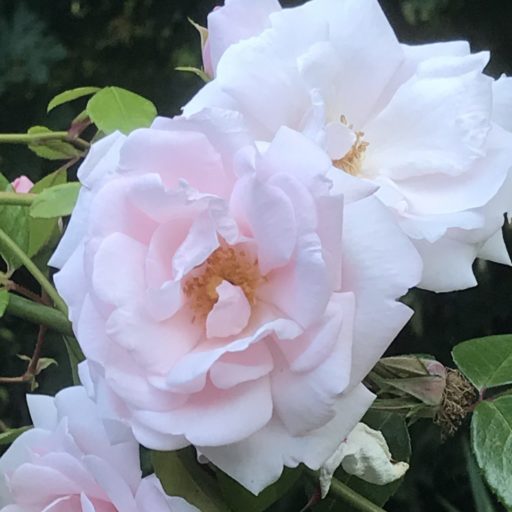
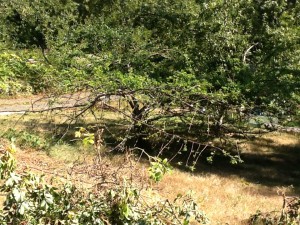
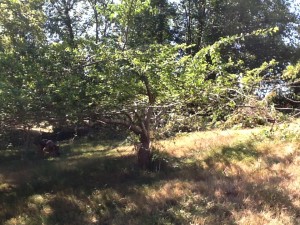
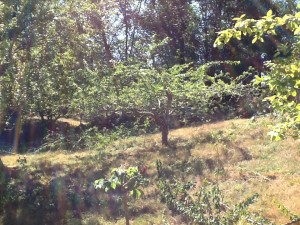
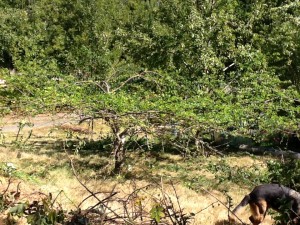
Leave a Reply